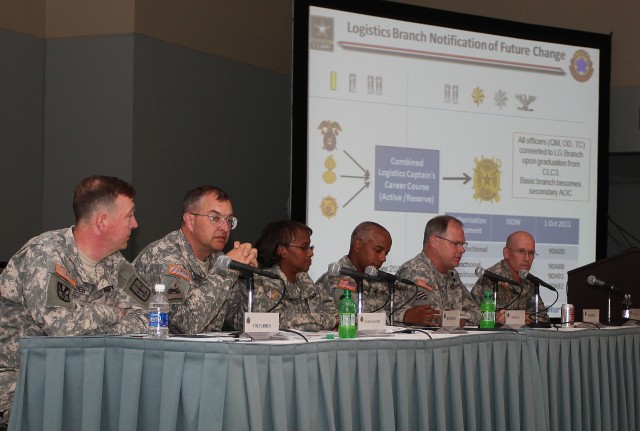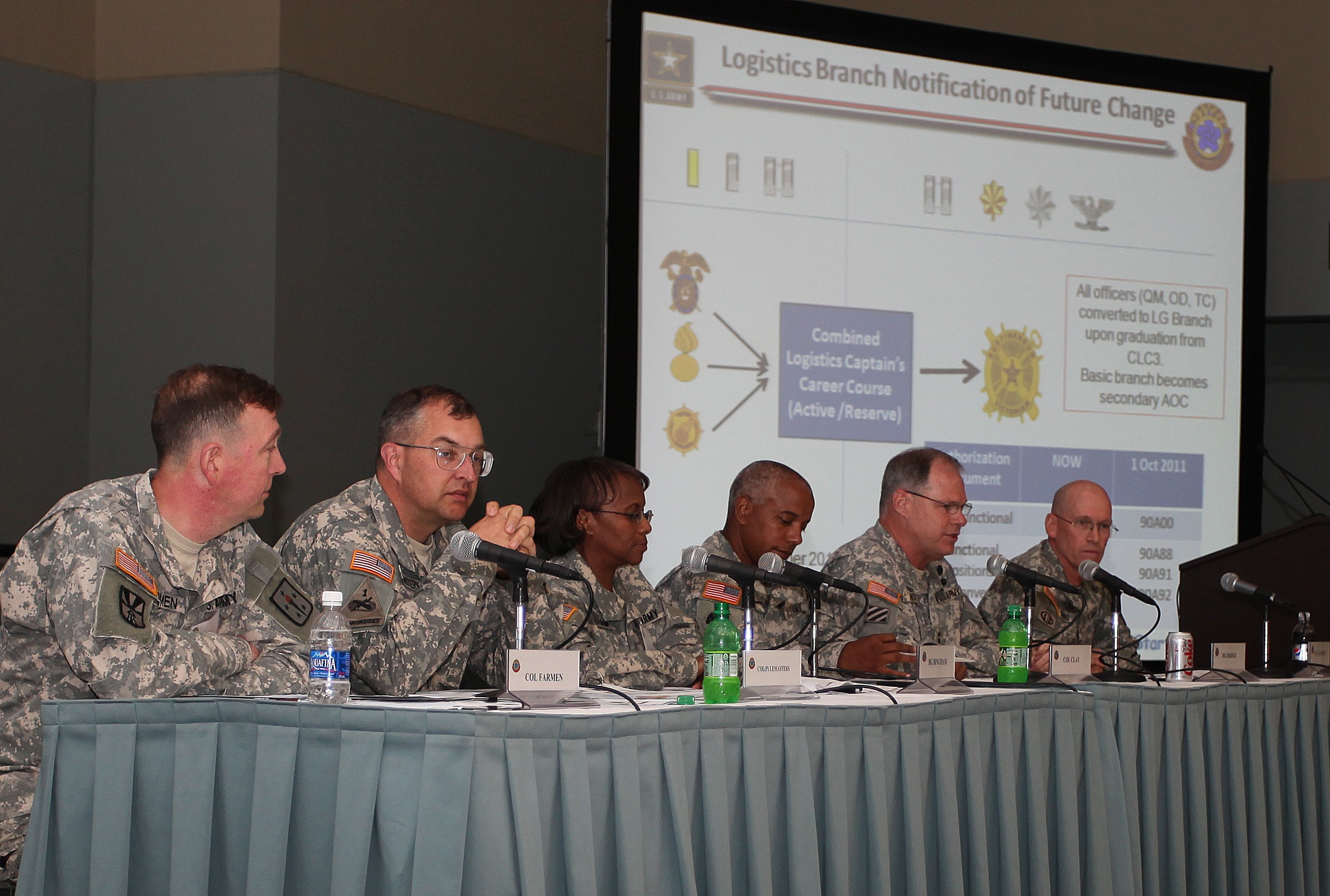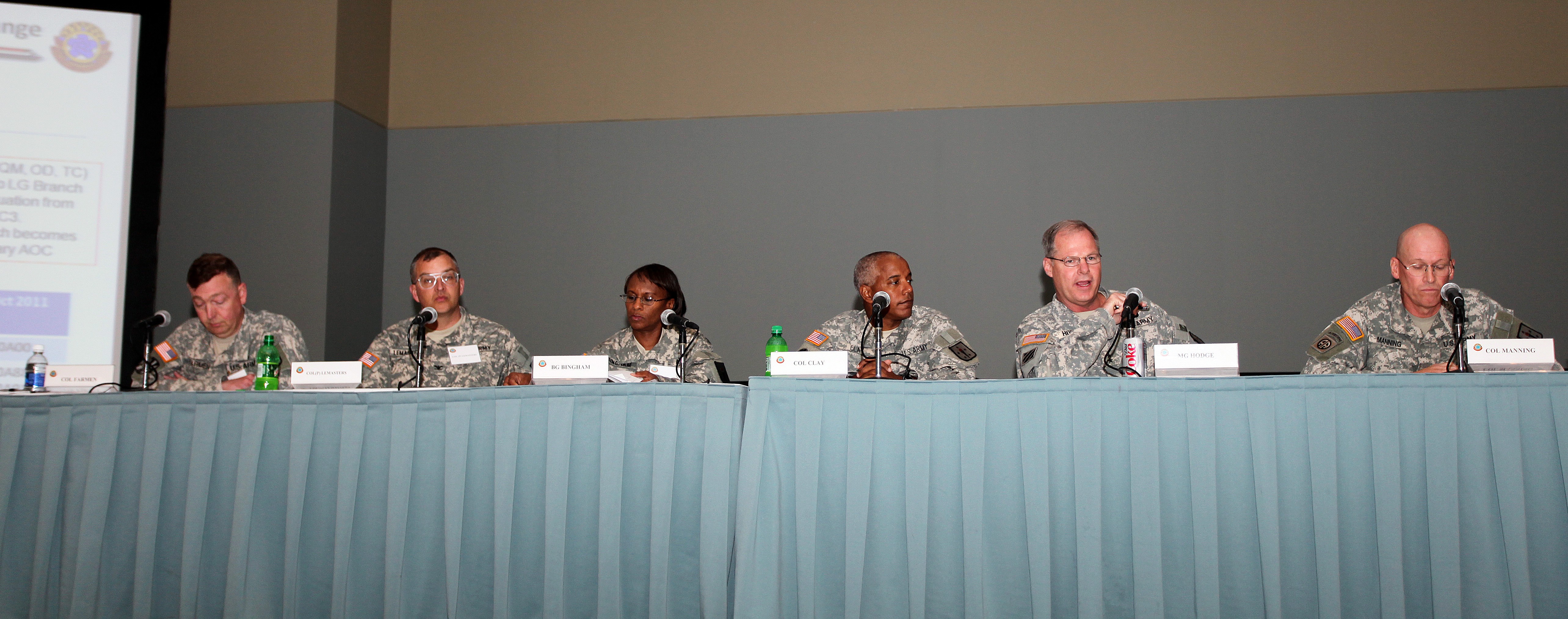RICHMOND, Va. - Sustainment Week affords leaders from around the Army an opportunity to gather yearly to talk about issues, gain valuable insights and discuss the future of the sustainment community. This year's conference kicked off May 9 with a common theme of 'getting back to the basics.'
"I think it is important that we as sustainment professionals take time out of our busy schedules in order to meet and reinforce relationships, and also explore and discuss current sustainment issues," said Maj. Gen. James L. Hodge, Combined Arms Support Command commanding general.
The Warrant Officer and Sergeants Major conferences started off the week with a focus on the future of sustainment. Leaders received information on training developments, the Army Logistics University, updates to the Warrior Training Center and new technology that could impact the way Soldiers train and operate.
A major focus for the sergeants major was tackling the issue of training and educating the next generation of noncommissioned officers.
"We focused on the lost art of garrison and how it starts with the leadership on the ground," said Command Sgt. Maj. C.C. Jenkins, Jr., Combined Arms Support Command command sergeant major. "We as sergeants major are the gatekeepers, standard bearers and servants to the system. We have to ensure we are taking care of our young Soldiers and teaching them how to be leaders."
For the second part of the conference, leaders moved to the Richmond Convention Center where Hodge provided an overview of the state of CASCOM as it relates to the completion of Base Realignment and Closure initiatives. He also touched on the future of the sustainment community as well as some of the challenges.
This overview set the stage for the rest of the conference, which is held by CASCOM annually to gather insights and feedback to assist with future planning.
"CASCOM serves as the pivot point for the Army's Sustainment Warfighting Function," said William F. Moore, CASCOM deputy to the commanding general. "This means we're not only looking ahead and trying to figure out what the Army is going to look like 5, 10, 15 years from now, but we're also training Soldiers and working with the folks that have to equip those Soldiers.
"We're kind of in the middle between the operating force and the generating force and we're looked upon to bring it altogether," continued Moore. "This is why we do things like host a Sustainment Commanders' Conference and bring our leaders together to talk about the hard issues."
Panels and briefings were held that tackled topics ranging from sustainment initiatives to human resource updates and branch proponency. While the briefings provided important information to the field, the panels provided an opportunity for leaders to share valuable information and gain feedback that could potentially help solve problems.
Hundreds were in attendance with hundreds more listening and asking questions via a live defense connect online stream provided by the CASCOM Knowledge Management team.
Issues discussed ranged from adapting the force of today to meet the needs of tomorrow, budget constraints and the best ways to support the warfighter.
"What we needed to discuss, and we did, was how we are going to deal with this new fiscal era that we find ourselves in," said Moore. "The nation can no longer afford the Army that we have, so we have to figure out the best way to make the Army leaner and more cost efficient while maintaining our strengths as we move ahead."
Part of the fiscal responsibility that the sustainment community must deal with involves the reduced resource environment across the Army. For this reason, 'getting back to the basics' was a common theme throughout the conference.
According to Brig. Gen. John R. O'Conner, Office of the Deputy Chief of Staff, Operations and Logistics Readiness (G-43) director, over the past 10 years the Army has applied different approaches to sustainment to make sure the best capability was provided to the warfighter. Many times, this meant augmenting abilities and filling gaps to accomplish missions.
"As we come out of the operational environment and move back into a base environment, we need to have better utilization and understanding of our resources so we can provide the best support and readiness to our forces," said O'Conner. "'Getting back to the basics' means bringing forces back, reeducating, retraining and having them understand the cost of doing business. Where we've provided them capabilities before, now Soldiers have to understand that when a system breaks, it's their responsibility to take ownership and provide that first level of maintenance."
Figuring out how to operate with fewer resources also means taking a hard look at how units are structured. The conference accomplished this by bringing together many different Army commands so ideas could be shared in an open-forum environment.
"We have to design units that are downrange fighting wars and providing sustainment," said Moore. "To do this, we have to work with the generating force, the Army Materiel Command and Department of the Army staff. We have to help them figure out exactly how much money we need to invest in the Army, what equipment we need to buy and how we access the people who will become the Soldiers performing these tasks on the battlefield."
The conference provided a platform for idea and information sharing and was followed by the Association of the United States Army Symposium and Exposition and the Combined Logistics Excellence Awards ceremony. CLEA recognized units for excellence in the areas of deployment, supply and maintenance.
"The outcome from the conference was great input from every angle of the Army where we have sustainers," said Moore. "We now have a better idea of how we should make those hard decisions as we move forward."






Social Sharing